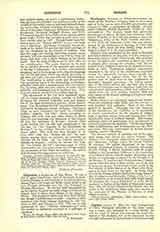

Cienfuegos, Diocese of (CENTUMFOCENSIS), includes all the Province of Santa Clara in the central part of Cuba, has an area of 9,560 square miles, and (census of 1899) a population of 356,536; 317,243 native Cubans; 28,398 Spaniards; 10,895 of other nationalities. The diocese, which had previously formed part of that of Havana, was erected by Archbishop Chapelle, of New Orleans, acting as Apostolic Delegate, in virtue of the Brief “Aetum praeclare”, of Leo XIII (February 20, 1903), but was administered by the Archbishop of Santiago de Cuba until May 31, 1904, when its first bishop, Fray Aurelio Torres y Sanz, O. C. D., took possession.
Missions were established in the cities of Trinidad and Sancti Spiritus, in this part of Cuba, during the sixteenth century, under Franciscans, who preached to the aborigines and continued to keep the spirit of religion alive among the colonists, until the expulsion of the religious orders by the Spanish Government in 1835. Numberless religious endowments witnessed to the piety of the inhabitants, especially during the eighteenth century, when Catholic fervor reached its highest pitch; but by far the greater part of these were in time confiscated by successive Spanish governors. On taking possession of his newly-erected see, the first care of the Bishop of Cienfuegos was to introduce order into the ecclesiastical administration, which had suffered severely from the civil troubles between 1868 and 1895, many of the church buildings having been irreparably ruined.
Santa Clara is an essentially agricultural district. There are numerous sugar mills, and the province is well supplied with railroads. Most of the immigration is Spanish. Although the vast majority of the inhabitants are Catholics, it is impossible to obtain contributions for the support of religion from a populace whose faith and morals have been impaired by years of political turmoil. The Cubans, moreover, have for generations been accustomed to a Church supported by the State. On the other hand, while indifferentism and Freemasonry are rife, Protestantism, although represented by several denominations, has few adherents.
The diocese contains 38 parishes, but of the parochial clergy only eleven are native Cubans. The religious and charitable institutions at Cienfuegos are: Monserrat College, under the Jesuit Fathers, 20 religious, 159 pupils; Bartolome de las Casas College, Dominican Fathers, 11 religious, 100 pupils; French College, 6 Marist Brothers, with 80 pupils; College of the Apostolate, 8 Sisters of the Apostolate of the Sacred Heart, with 83 pupils; Huerfanas de la Patria, an orphanage conducted by the Daughters of the Rosary, 27 boarders and 54 day-scholars; Congregation of the Servants of Mary, for the care of the sick in their own homes, 8 sisters and 43 girl pupils in the free school; 9 Little Sisters of the Poor, with 62 inmates of their home for the aged. At Santa Clara there is the College of Saint Paul of the Cross, Passionists, 10 religious and 62 pupils; College of the Love of God, 6 Sisters of the Love of God, with 56 girl pupils. At Trinidad the “Liceo Trinitario” is under the direction of a Father of the Order of Discalced Carmelites. The few native Cubans in this diocese who feel called to the priesthood either make their studies at the seminary of the Diocese of Havana or enter religious orders.

